What is Lajin?
La: To stretch;
Jin: Chinese medical term similar to ligaments, tendons; [ A tendon is a fibrous connective tissue which attaches muscle to bone. Tendons may also attach muscles to structures such as the eyeball. ... A ligament is a fibrous connective tissue which attaches bone to bone, and usually serves to hold structures together and keep them stable. ]

Lajin: To stretch and to restore functions of Jin where Jin-Suo has occurred, so as to self heal illnesses, restore health and prevent aging;
Jin-Suo: Contraction, atrophy or degeneration of the functions of Jin, which is the major contributor to aging and most illnesses.

Lajin is a simple way of proactive health management. When practiced correctly, it can help enhance overall health and promote longevity by cleansing vital energy channels in the body, thus enabling smooth Qi and blood flow. This in turn improves various acute and chronic conditions such as hypertension, diabetes, gynaecological and prostate disorders, dislocations as well as pains caused by Jin-Suo.

↗This position is by far the safest and provides the most comprehensive efficacies. A customized Lajin bench is recommended, but chairs can be used as an alternative. You must coordinate your breathing and stretch your arms as much as you can. This is particularly effective in helping elevate sagging breasts and lose weight.
Lajin Method
If you are using chairs, place two side by side with the side of one chair against the wall;
Lie down on your back, put the arms straight behind your head and keep them flat on the bench;
Place the right leg up against the pillar, while the left leg bends down as much as possible to touch the floor;
Move your buttock against the pillar and keep the raised leg flat against the pillar;
Avoid legs moving outward; Move the inner thighs closer together to increase intensity;
Maintain this position for 10-40 minutes, and then switch your legs.
For best efficacy, practice it daily.
A Few Things to Note about Lajin
Lajin is based on natural movements of the body, hence any pain, numbness, soreness or swelling pain are signs of poor blood circulation, which can be gradually improved with Lajin.

Lajin can be self-administered where the intensity and duration is fully within your control. Know your limits to avoid injuries.
Aches and pains experienced after Lajin can be a sign of ailment. However, such aches and pains should be within your tolerable range. Hence, Lajin enables one to adjust the intensity and duration of the practice to suit individual needs and tolerance.
Beginners, those of advanced age and with severe illnesses should practice with medium intensity using a step-by-step approach to get into positions. Intensity and duration can be gradually increased for greater efficacy.

For those with stiff muscles from early on, stiff muscles are the body’s alarm signaling decreased liver function — affecting muscles, joints, tendons and ligaments. It is therefore even more crucial for them to practice Lajin.
When Lajin with increased intensity and duration no longer gives you pain, numbness or soreness — Congratulations! Your body now has agility, perfect alignment and balance, and smooth Qi and blood flow.
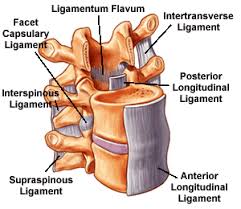
What are the common physical responses brought by Lajin?
Type 1:
Pain, numbness, soreness, swelling pain, itchiness and yawning are some of the natural responses you may experience when you practice Lajin and/or Paida. These physical responses, according to Chinese medicine, are signs of “Qì Chōng Bìng Zào”, i.e. the healthy Qi is charging at disease nidus. To some extent, this is the darkness before dawn breaks. These responses are signs indicating that the stagnated meridians are now being cleared.
Type 2:
Red spots, rashes, blisters, dizziness, belching, headaches, nausea, thick phlegm, running nose, farting, extremely stinky excrement and urine
All these responses are signs of “Qì Chōng Bìng Zào” and detoxification reactions. When such signs appear, you should go on with Lajin and Paida. After internal self-cleansing and detoxification, you will gradually self-heal diseases and improve your health.
Continue Lajin and Paida even after these response reactions subside, adjusting to lower levels of intensity and shorter duration should that be your wish.
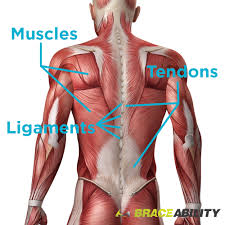
What is the appropriate duration and intensity of Lajin?
Duration of Lajin
There is no fixed standard, but 10-40 minutes for each leg in reclining position is recommended. This is, however, dependant on individual tolerance; hence, it serves only as a reference. But the general rule of thumb is the longer the practice, the better the efficacy and health benefits.
When doing Lajin in reclining position, it is all right for most healthy people to straighten the raised leg and set the other leg on the ground. However, for those who are frail or have severe illnesses, it can be quite a challenge. Some may feel intense pain the moment they get into position and want to get down at once. For these people, Lajin should be practiced in a progressive manner in terms of both duration and intensity, starting with one or two minutes of Lajin.
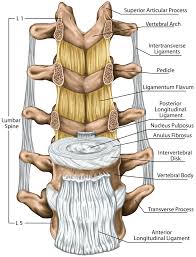
For people who dance or practice yoga, 10 minutes of Lajin will not be a challenge. If the duration is extended to 30-40 minutes, all kinds of physical responses will come up, such as leg numbness, pain, belching, farting, excrement, sweating… Chronic diseases such as insomnia, constipation, kidney deficiency, cardiovascular and cerebrovascular diseases will be gradually alleviated.
Intensity of Lajin
The intensity of Lajin varies from one practice to another and has no fixed standard, but should also be within a tolerable range.
You can ask someone to help press your leg, or you may use sandbags.
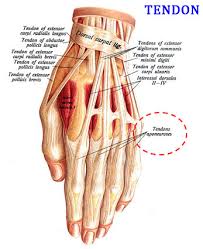
Hands stretched backward may carry weights such as dumbbells, bags or dictionaries. This may add to your pain, but is definitely more effective in curing many diseases such as frozen shoulder, chest tightness, breast illness and cardiac diseases.
When incorporated with proper breathing, stretching arms backward as far out as possible has obvious efficacies for obese women or those with sagging breasts, because Lajin in reclining position changes the direction of gravity on breasts.
Cautions and Suggestions
When doing Lajin, it is best to wear long-sleeved shirts and long pants to keep warm. Air-conditioning should be turned off or lowered as the pores are opened up during Lajin, otherwise the chills may induce more diseases.

If, in reclining position, your sole cannot touch the ground, you can slightly move your knee and leg to the side to ease the pain. But once the foot can touch the ground, try to draw back the leg close to the other, to avoid splay feet.
Patients with hypertension, cardiac diseases, porous bones, or those who have been frail, should first ask for doctor’s advice before doing Lajin. People who have Jin- Suo will definitely feel painful during Lajin, and experience high blood pressure and rapid heartbeat, in which case it is best to rest the head on a pillow to ease blood rush to the head.
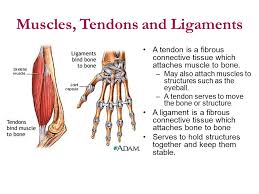
Aged people, patients of porous bones or those who are frail or have severe illnesses might faint away because of pain. Therefore, these people should take it more slowly, and gradually increase intensity and duration, of which there are no fixed standards, and they vary from person to person. But persistent efforts will pay off in the end.
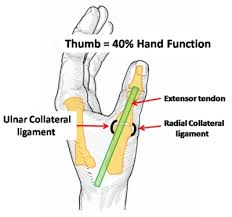
If, in the middle of Lajin, a patient is found with numb and cold limbs, paleness in the face and cold sweat, this is known in Western medicine as “Hyperventilation Syndrome”. It can be resolved by covering the patient’s nose and mouth with a paper bag or plastic bag to form an enclosed breathing system. The symptoms should be gone in five minutes and the patient’s condition should return to normal.

Women may practice Lajin at any point of the menstrual cycle. Patients suffering from painful menstruation may gain better benefits if Lajin is practiced during the period.


Lajin is best complemented with Paida for enhanced efficacy. In particular, for patients who have problems performing Lajin, slapping the joints, hands and feet can help relieve the pain felt during Lajin.
La: To stretch;
Jin: Chinese medical term similar to ligaments, tendons; [ A tendon is a fibrous connective tissue which attaches muscle to bone. Tendons may also attach muscles to structures such as the eyeball. ... A ligament is a fibrous connective tissue which attaches bone to bone, and usually serves to hold structures together and keep them stable. ]
Lajin: To stretch and to restore functions of Jin where Jin-Suo has occurred, so as to self heal illnesses, restore health and prevent aging;
Jin-Suo: Contraction, atrophy or degeneration of the functions of Jin, which is the major contributor to aging and most illnesses.

Lajin is a simple way of proactive health management. When practiced correctly, it can help enhance overall health and promote longevity by cleansing vital energy channels in the body, thus enabling smooth Qi and blood flow. This in turn improves various acute and chronic conditions such as hypertension, diabetes, gynaecological and prostate disorders, dislocations as well as pains caused by Jin-Suo.

↗This position is by far the safest and provides the most comprehensive efficacies. A customized Lajin bench is recommended, but chairs can be used as an alternative. You must coordinate your breathing and stretch your arms as much as you can. This is particularly effective in helping elevate sagging breasts and lose weight.
Lajin Method
If you are using chairs, place two side by side with the side of one chair against the wall;
Lie down on your back, put the arms straight behind your head and keep them flat on the bench;
Place the right leg up against the pillar, while the left leg bends down as much as possible to touch the floor;
Move your buttock against the pillar and keep the raised leg flat against the pillar;
Avoid legs moving outward; Move the inner thighs closer together to increase intensity;
Maintain this position for 10-40 minutes, and then switch your legs.
For best efficacy, practice it daily.
A Few Things to Note about Lajin
Lajin is based on natural movements of the body, hence any pain, numbness, soreness or swelling pain are signs of poor blood circulation, which can be gradually improved with Lajin.
Lajin can be self-administered where the intensity and duration is fully within your control. Know your limits to avoid injuries.
Aches and pains experienced after Lajin can be a sign of ailment. However, such aches and pains should be within your tolerable range. Hence, Lajin enables one to adjust the intensity and duration of the practice to suit individual needs and tolerance.
Beginners, those of advanced age and with severe illnesses should practice with medium intensity using a step-by-step approach to get into positions. Intensity and duration can be gradually increased for greater efficacy.
For those with stiff muscles from early on, stiff muscles are the body’s alarm signaling decreased liver function — affecting muscles, joints, tendons and ligaments. It is therefore even more crucial for them to practice Lajin.
When Lajin with increased intensity and duration no longer gives you pain, numbness or soreness — Congratulations! Your body now has agility, perfect alignment and balance, and smooth Qi and blood flow.
What are the common physical responses brought by Lajin?
Type 1:
Pain, numbness, soreness, swelling pain, itchiness and yawning are some of the natural responses you may experience when you practice Lajin and/or Paida. These physical responses, according to Chinese medicine, are signs of “Qì Chōng Bìng Zào”, i.e. the healthy Qi is charging at disease nidus. To some extent, this is the darkness before dawn breaks. These responses are signs indicating that the stagnated meridians are now being cleared.
Type 2:
Red spots, rashes, blisters, dizziness, belching, headaches, nausea, thick phlegm, running nose, farting, extremely stinky excrement and urine
All these responses are signs of “Qì Chōng Bìng Zào” and detoxification reactions. When such signs appear, you should go on with Lajin and Paida. After internal self-cleansing and detoxification, you will gradually self-heal diseases and improve your health.
Continue Lajin and Paida even after these response reactions subside, adjusting to lower levels of intensity and shorter duration should that be your wish.
What is the appropriate duration and intensity of Lajin?
Duration of Lajin
There is no fixed standard, but 10-40 minutes for each leg in reclining position is recommended. This is, however, dependant on individual tolerance; hence, it serves only as a reference. But the general rule of thumb is the longer the practice, the better the efficacy and health benefits.
When doing Lajin in reclining position, it is all right for most healthy people to straighten the raised leg and set the other leg on the ground. However, for those who are frail or have severe illnesses, it can be quite a challenge. Some may feel intense pain the moment they get into position and want to get down at once. For these people, Lajin should be practiced in a progressive manner in terms of both duration and intensity, starting with one or two minutes of Lajin.
For people who dance or practice yoga, 10 minutes of Lajin will not be a challenge. If the duration is extended to 30-40 minutes, all kinds of physical responses will come up, such as leg numbness, pain, belching, farting, excrement, sweating… Chronic diseases such as insomnia, constipation, kidney deficiency, cardiovascular and cerebrovascular diseases will be gradually alleviated.
Intensity of Lajin
The intensity of Lajin varies from one practice to another and has no fixed standard, but should also be within a tolerable range.
You can ask someone to help press your leg, or you may use sandbags.
Hands stretched backward may carry weights such as dumbbells, bags or dictionaries. This may add to your pain, but is definitely more effective in curing many diseases such as frozen shoulder, chest tightness, breast illness and cardiac diseases.
When incorporated with proper breathing, stretching arms backward as far out as possible has obvious efficacies for obese women or those with sagging breasts, because Lajin in reclining position changes the direction of gravity on breasts.
Cautions and Suggestions
When doing Lajin, it is best to wear long-sleeved shirts and long pants to keep warm. Air-conditioning should be turned off or lowered as the pores are opened up during Lajin, otherwise the chills may induce more diseases.
If, in reclining position, your sole cannot touch the ground, you can slightly move your knee and leg to the side to ease the pain. But once the foot can touch the ground, try to draw back the leg close to the other, to avoid splay feet.
Patients with hypertension, cardiac diseases, porous bones, or those who have been frail, should first ask for doctor’s advice before doing Lajin. People who have Jin- Suo will definitely feel painful during Lajin, and experience high blood pressure and rapid heartbeat, in which case it is best to rest the head on a pillow to ease blood rush to the head.
Aged people, patients of porous bones or those who are frail or have severe illnesses might faint away because of pain. Therefore, these people should take it more slowly, and gradually increase intensity and duration, of which there are no fixed standards, and they vary from person to person. But persistent efforts will pay off in the end.
If, in the middle of Lajin, a patient is found with numb and cold limbs, paleness in the face and cold sweat, this is known in Western medicine as “Hyperventilation Syndrome”. It can be resolved by covering the patient’s nose and mouth with a paper bag or plastic bag to form an enclosed breathing system. The symptoms should be gone in five minutes and the patient’s condition should return to normal.
Women may practice Lajin at any point of the menstrual cycle. Patients suffering from painful menstruation may gain better benefits if Lajin is practiced during the period.
Lajin is best complemented with Paida for enhanced efficacy. In particular, for patients who have problems performing Lajin, slapping the joints, hands and feet can help relieve the pain felt during Lajin.

No comments:
Post a Comment